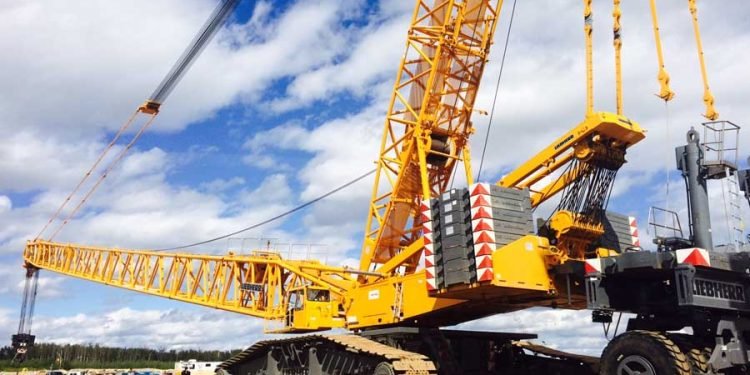Crawler cranes play a crucial role in urban construction projects due to their versatility and heavy-lifting capability. In addition, Crawler cranes offer stability and precision, making them ideal for complex and delicate operations.
The mobility and ability of crawler cranes to operate in limited spaces make them ideal for use in densely populated urban areas where traditional cranes may not be feasible. As a result, crawler cranes are a critical tool for completing urban construction projects.
As with anything in life, there are disadvantages associated with this kind of crane.
Here we will discuss the pitfalls of using crawler crane rentals in detail and explore the alternatives that can be used without any hindrances in construction projects.
What Are The Shortcomings Of Crawler Cranes For Construction Projects?
Weight of the Crawler Crane
The bulky weight of crawler cranes can be a disadvantage in several ways:
- Transportation: Crawler cranes are large and heavy machines, making transportation difficult and costly. They need specialized transport vehicles and equipment, which can add to the overall expenses of a project.
- Setup time: Setting up a crawler crane takes time, as it must be assembled and levelled before it can start operation. This can cause project delays, especially when multiple crawler cranes are required.
- Damage to infrastructure: The weight of a crawler crane can cause damage to roads, bridges, and other infrastructure when it is moved from one location to another. This can result in additional costs for repairs and compensation.
Examples of these limitations can be seen in construction sites in densely populated urban areas where transportation is limited, and access to the construction site may be difficult. In addition, the weight of the crane may also cause damage to infrastructure and require additional permits, adding to the overall costs and timeline of the project.
High Operational Costs
The operating cost of crawler cranes can be high compared to other cranes. This is due to the following factors, including:
- Fuel and maintenance costs: Crawler cranes are heavy-duty machines that consume a lot of fuel and require regular maintenance. These costs can add up quickly, primarily if the crane is used for an extended period.
- Operator cost: Operating a crawler crane requires a skilled and certified operator, which can add to the overall cost of a project.
- Insurance and licensing: Insurance and licensing costs for crawler cranes can be higher than other types due to their size and weight.
- Transportation and setup costs: As mentioned earlier, the transportation and setup of a crawler crane can be time-consuming and expensive, adding to the overall cost of a project.
Likely Alternatives For Crawler Cranes
Spider Cranes:
When it comes to easy mobility and the ability to work in compact spaces, spider cranes are the best alternative to crawler cranes. However, there are several aspects in which spider cranes triumph over crawler cranes:
- Mobility: Spider cranes are smaller and more mobile than crawler cranes, making them better suited for use in tight spaces and urban areas. They can be transported easily and set up quickly, reducing downtime and increasing efficiency.
- Cost: Renting a spider crane are generally less expensive to operate and maintain than crawler cranes. They also typically have lower transportation and setup costs.
- Flexibility: Spider cranes are more versatile than crawler cranes, as they can operate in a wider range of environments and are better suited for use in confined spaces.
- Environmental impact: Spider cranes also consume less fuel and produce fewer emissions, making them more environmentally friendly.
It is worth noting that while spider cranes are better in some aspects, they are not suitable for all applications and may not be able to handle the heavy loads that crawler cranes can. Therefore, the choice between the two types of cranes depends on a project’s specific needs and requirements.
Hydraulic Cranes
Hydraulic cranes utilize the power of hydraulic systems to lift and lower heavy loads at construction sites. In comparison, crawler cranes are often used for handling heavy loads in industrial settings such as shipyards.
One advantage of renting a hydraulic crane is their maneuverability, as they are more agile than crawler cranes which tend to move more slowly. Also, hydraulic cranes are mounted on trucks, allowing easy transportation from one job site to another. Conversely, crawler cranes must be disassembled and lifted on specialized trucks before being relocated to a new construction site.
Final Words
Despite their many short giving, crawler cranes have several advantages crucial for heavy construction projects. Similarly, spider and hydraulic cranes have their area of expertise. The final choice, however, depends solely on the specific needs and requirements of the project.












